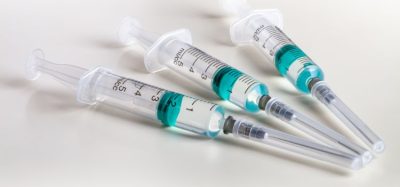The year ahead for RNA therapeutic development and manufacturing
Posted: 2 January 2025 | Dr Kate Broderick (Maravai Life Sciences and TriLink Biotechnologies) | No comments yet
As the industry prepares for a new year, Dr Kate Broderick, PhD, Chief Innovation Officer of Maravai Life Sciences and TriLink Biotechnologies, shares her thoughts on what the RNA therapeutics landscape of 2024 can tell us about what may be on the horizon in 2025.


The RNA therapeutics industry stands poised for a transformative 2025, driven by breakthroughs in technology, expanding clinical applications, and a rapidly growing pipeline of innovative therapies. Following the unprecedented speed and success of mRNA-based COVID-19 vaccine development, the field has experienced a surge in investment and research to unlock the powerful potential of RNA for other therapeutic applications. From highly targeted cancer treatments to ex vivo gene therapies for rare genetic disorders, this wave of development in novel RNA-based therapies continues to grow.
As advancements in delivery systems, RNA modification technologies, and manufacturing processes address lingering challenges, the industry is gaining momentum toward broader commercialisation and clinical adoption.
This article explores the key trends, anticipated milestones, and emerging innovations likely to define RNA therapeutic development in 2025, offering a glimpse into a future shaped by cutting-edge science and strategic collaboration.
Advancing innovative RNA applications
While mRNA-based COVID-19 vaccines served as a crucible for the technical and logistical feasibility of delivering RNA-based therapeutics at a massive scale, their success also supported broader indications and modalities for RNA. Now, we’re seeing novel RNA-based therapies progress through development at a level that would have been unimaginable only a decade ago.
In the year since the first CRISPR therapy1 obtained approval in the US and Europe, we’ve seen a great deal of innovation in that space. Earlier CRISPR-based therapies in development have classically used either viral vectors or direct delivery of ribonucleoproteins to introduce nucleases into cells. Recently, there has been mounting interest in delivering synthetic mRNA encoding the nuclease of interest, such as Cas9 or Cas12 nucleases.
With more than 60 CRISPR-based clinical trials currently ongoing and countless candidates in the preclinical pipeline, the next CRISPR approval is likely around the corner”
With more than 60 CRISPR-based clinical trials currently ongoing and countless candidates in the preclinical pipeline, the next CRISPR approval is likely around the corner. I anticipate that the emergence of more approved CRISPR-based therapies will solidify the feasibility of this modality, shifting focus to improving efficiency and performance with updates like mRNA-encoded nucleases.
Another exciting modality to keep an eye on this year will be RNA editing therapeutics. Rather than the enduring effects of DNA-based editing, CRISPR can also be used to target transiently expressed RNA. At least three therapies using this technology have entered the clinic as of 2024. While the first clinical trials of RNA editing have focused on rare diseases, the transient nature of the modality holds great potential for pain, inflammation, and other applications.
In October last year, Wave Therapeutics announced positive proof-of-mechanism data2 for their RNA editing platform, paving the way for future success. In 2025, I expect to see more RNA-editing therapeutic candidates make their way to clinical trials and more novel preclinical data to illustrate the potential of this technology.
Base modifications: far from basic
The Nobel-winning work by Karikó and Weissman3 evidenced the powerful implications of modified bases in making RNA therapeutics more effective and less immunogenic, directly enabling the development of mRNA vaccines during the COVID-19 pandemic. However, further work has demonstrated that the modified uridines that proved foundational for those vaccines are not a one-size-fits-all solution for RNA therapeutics.
In the coming years, I expect to see… a deeper exploration into how different base modifications can support different RNA therapeutic technologies”
In the coming years, I expect to see efforts continue to find the “next” influential modified base, as well as a deeper exploration into how different base modifications can support different RNA therapeutic technologies. For example, self-amplifying RNA (saRNA) shows great promise as a vaccine platform, but progress in this area has been limited due to its high immunogenicity.
Innovation in base modification could be transformative for differing profiles of future RNA vaccines. Here, collaboration between academic researchers, drug developers, and CDMOs will be key to making progress in identifying base modification strategies and leveraging them in therapeutic candidates.
RNA therapeutics – shifting applications, shifting scale
As the COVID-19 pandemic has largely receded from public consciousness, RNA therapeutic developers have shifted their attention and efforts far beyond infectious disease applications. Among these are rare disease treatments and personalised therapies, such as cancer vaccines, which introduce new demands on manufacturers who adapted their infrastructure to scale vaccine production for a global pandemic. After investing millions into massive vaccine scale-up capabilities, RNA manufacturers are now tasked with adapting to small-batch production better served by hundreds of 1L bioreactors than a single larger bioreactor.
I anticipate that making this transition to accommodate small-scale GMP-grade RNA production will be a significant obstacle for the field in 2025″
I anticipate that making this transition to accommodate small-scale GMP-grade RNA production will be a significant obstacle for the field in 2025. While evolving industry needs necessitate small-scale, rapid-batch RNA manufacturing, mounting interest in developing mRNA-based vaccines for influenza4 and other common infectious diseases will still require large-scale capabilities.
Maintaining agile, scalable production capacity will also be essential to stay prepared for the next global pandemic. There is no simple solution to achieve this goal, but I predict that the industry experience and knowledge built over the last several years will help manufacturers adapt their infrastructure and focus their efforts to scale accordingly.
Adapting regulatory guidance to an evolving industry
As the RNA therapeutics industry has matured, regulatory guidelines have evolved in parallel to keep up with the growing field. In the summer of 2024, the US Food and Drug Administration (FDA) issued draft guidance5 on the implementation of a platform technology designation programme.
This designation is intended to provide a new review approach for platform technologies that may not fit within the traditional approval process for drugs or biologics. By earning this designation, sponsors could streamline approval for future products incorporating the same platform technology and grant other companies the right of reference to their platform.
implications of the potential [platform technology designation programme], as well as how RNA therapeutics developers can best set themselves up for success upon its implementation, will be a hot topic in 2025″
Although the designation would help accelerate the review process for drugmakers working in RNA therapeutics and beyond, one small point presents a potential barrier: only technologies used within FDA-approved drugs or biologics are eligible for the designation.
With so few products currently falling under those criteria, the guidelines could create significant challenges for companies looking to enter the space or who have products approved outside of the US. As of late 2024, the guidance is still under internal review by the FDA, so it remains unclear when or how the programme would be implemented. In any case, I anticipate that the implications of the potential designation, as well as how RNA therapeutics developers can best set themselves up for success upon its implementation, will be a hot topic in 2025.
Fueling RNA innovation into the future
As we look ahead to 2025, RNA-based therapeutics continue to be a transformative force in modern medicine, offering unprecedented opportunities to revolutionise healthcare. With this promise comes the responsibility of drug developers and RNA manufacturers to help RNA therapeutics reach their full potential.
The rapid advancements in mRNA vaccine technology spurred by the COVID-19 pandemic have significantly accelerated the progress and acceptance of RNA-based therapies. While this era led to focused investment in large-scale production infrastructure, the future lies in addressing a broader spectrum of diseases, including cancers and rare diseases.
By embracing flexibility and investing in cutting-edge technologies, CDMOs and drug developers can work together to bridge the gap between groundbreaking research and real-world clinical applications. To ensure the continued success of RNA therapeutics, maintaining a strong commitment to quality, efficiency, and patient safety is essential.
Through fostering collaboration among researchers, manufacturers, and regulatory bodies, we can unlock the full potential of RNA therapeutics and fuel the development of lifesaving therapies in 2025 and beyond.
About the author


Before joining Maravai in 2022, Dr Broderick held roles of increasing responsibility at Inovio Pharmaceuticals, most recently as Senior Vice President of R&D. She received her PhD from the University of Glasgow in Scotland and completed post-doctoral research at the University of California, San Diego.
References
1. First Crispr Based Gene Editing Therapy Authorised. [Internet] European Pharmaceutical Review. 2023. Available from: https://www.europeanpharmaceuticalreview.com/news/188897/first-crispr-based-gene-editing-therapy-authorised/
2. Wave Life Sciences Announces First-Ever Therapeutic RNA Editing in Humans Achieved in RestorAATion-2 Trial of WVE-006 in Alpha-1 Antitrypsin Deficiency. [Internet] Wave Life Sciences. 2024. Available from: https://ir.wavelifesciences.com/node/11731
3. mRNA Researchers Awarded 2023 Nobel Prize. [Internet] European Pharmaceutical Review. 2023. Available from: https://www.europeanpharmaceuticalreview.com/news/187262/mrna-researchers-awarded-2023-nobel-prize/
4. HHS provides $176 million to develop pandemic influenza mRNA-based vaccine. [Internet] U.S. Department of Health and Human Services (HHS). 2024. Available from: https://www.hhs.gov/about/news/2024/07/02/hhs-provides-176-million-develop-pandemic-influenza-mrna-based-vaccine.html
5. Pollard V, Mohanty A, Mikson C. FDA issues Platform Technology Designation Program for Drug Development draft guidance [Internet] DLA Piper. 2024. Available from: https://www.dlapiper.com/en/insights/publications/2024/06/fda-issues-platform-technology-designation-program-for-drug-development-draft-guidance
Related topics
Biopharmaceuticals, Clinical Development, Clinical Trials, Drug Development, Drug Manufacturing, Drug Markets, Industry Insight, Manufacturing, mRNA, Regulation & Legislation, Research & Development (R&D), RNA, Technology, Therapeutics









